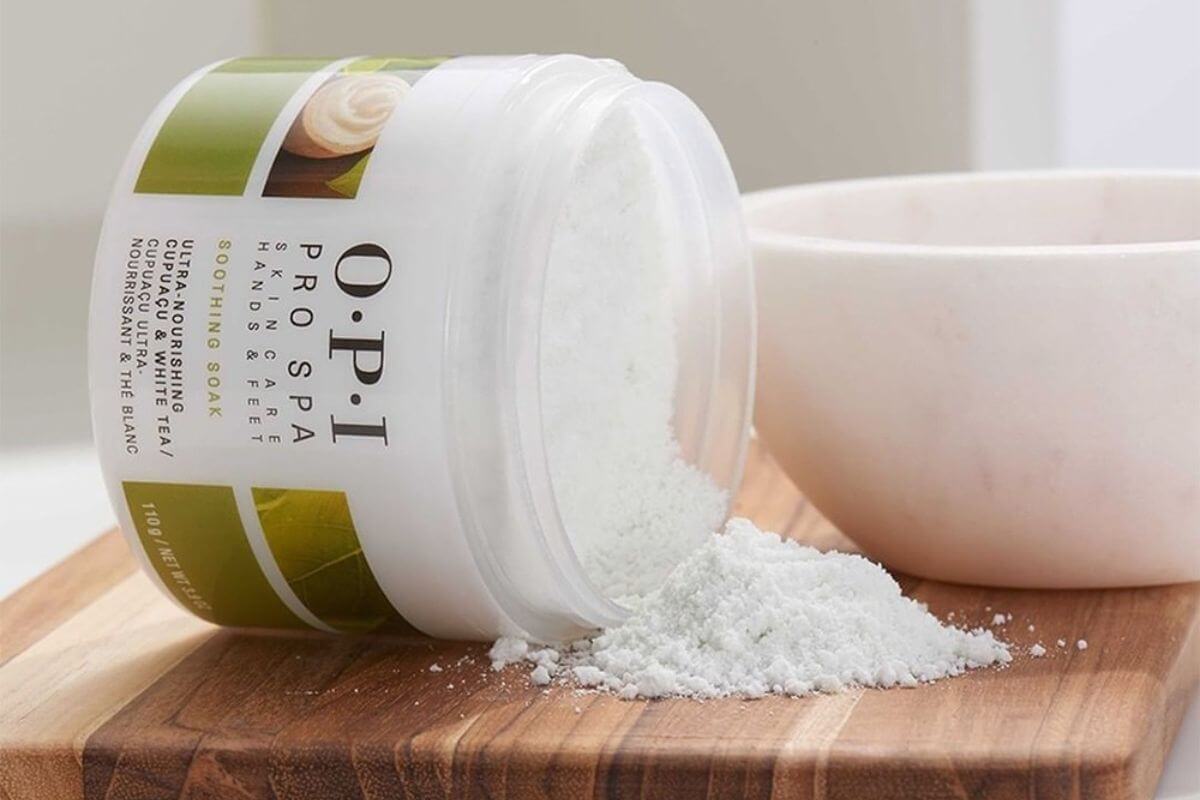The gentle ritual of giving a baby a warm bath is a cherished tradition for many parents. Beyond its obvious hygienic benefits, the bath is often hailed as a bedtime strategy to encourage a restful night’s sleep for both infants and parents. In this exploration, we delve into the question: Do baths help babies sleep?
I. The Calming Effect of Warm Water
Bathing a baby is not just a routine; it’s a ritual woven with warmth and comfort, and at the center of this ritual lies the magical element of warm water. The soothing touch of warm water on a baby’s delicate skin has a profound and calming effect, transforming the bath into a sensory experience that goes beyond mere cleanliness.
Temperature and Comfort
A. Mimicking the Womb
The concept of using warm water during a baby’s bath harks back to the womb’s comforting environment. Maintaining the water temperature around 37 degrees Celsius (98.6 degrees Fahrenheit) creates a familiar sensation, echoing the coziness of the womb and fostering a sense of security for the baby.
B. Relaxation of Muscles and Joints
The immersion in warm water induces a gentle relaxation of a baby’s tiny muscles and joints. This is particularly beneficial for little ones who may experience tension from the day’s activities or the natural adjustments of their growing bodies. The resulting comfort sets the stage for a serene bedtime routine.
Relaxation for Better Sleep
A. Calming the Nervous System
The warmth of the water has a tranquilizing effect on the baby’s nervous system. It helps to regulate stress hormones, promoting a state of calmness that is conducive to a restful night’s sleep. This physiological response extends beyond the immediate post-bath period, contributing to an overall sense of well-being.
B. Establishing Sleep Associations
The act of bathing in warm water becomes a sleep-associated cue for the baby. Over time, as this routine is consistently woven into the bedtime regimen, the baby learns to associate the sensory experience of warm water with the approaching transition from wakefulness to sleep.
Creating a Multi-Sensory Experience
A. Engaging the Senses
Bath time engages multiple senses. The feel of the water, the gentle sounds of splashing, and even the subtle scent of baby-friendly products contribute to a holistic sensory experience. This multisensory engagement adds layers of comfort, creating an environment that speaks to a baby’s innate desire for security and connection.
B. Enhancing Bonding Moments
Beyond its physical effects, the calming bath routine fosters precious bonding moments between the baby and the caregiver. The soothing touch, the tender words spoken, and the shared gaze create an emotional connection that is integral to a baby’s sense of security, further promoting a tranquil mindset before sleep.
Cultivating a Tranquil Environment
A. Diminishing External Stimuli
The bath serves as a gentle transition from the day’s activities to the quietude of bedtime. Dimming lights and minimizing external stimuli during and after the bath contribute to creating a serene environment, signaling to the baby that it’s time to wind down and prepare for sleep.
B. Encouraging Mindful Interaction
Bath time provides an opportunity for mindful interaction between the caregiver and the baby. By being fully present during this shared activity, parents can tune into the baby’s cues, responding with gentleness and attunement, further reinforcing the calming effect of the warm water.
In conclusion, the calming effect of warm water during a baby’s bath extends far beyond the practicalities of hygiene. It is a conduit for sensory delight, a catalyst for relaxation, and a cornerstone of bedtime rituals that nurture not just the body, but also the soul. The gentle embrace of warm water creates a timeless sanctuary where the day’s busyness gently fades, and the promise of a tranquil night’s sleep emerges—a promise held in the quiet ripples of a bath well-taken.
II. Establishing a Bedtime Routine
A. Creating Predictability
Bath time, when incorporated into a consistent bedtime routine, helps babies recognize and anticipate the transition from wakefulness to sleep. Predictability is crucial for infants, providing a sense of security and assurance.
B. Sensory Association
The sensory experience of a warm bath becomes an associative cue for sleep. The warm water, coupled with gentle motions and soft lighting, signals to the baby’s senses that bedtime is approaching, preparing them for a peaceful night’s rest.
III. Bathing as a Bonding Experience
A. Quality Interaction
Bath time offers an opportunity for quality interaction between parents and their baby. The close physical contact, soothing words, and gentle caresses during the bath strengthen the parent-child bond, fostering emotional security that aids in bedtime comfort.
B. Stress Reduction
For parents, the act of giving a bath can also be a stress-reducing activity. The focus on the baby’s needs, the calming environment, and the shared moments contribute to a positive atmosphere that can translate into a smoother bedtime routine.

IV. Addressing Discomfort and Colic
A. Relieving Digestive Discomfort
Warm baths have been known to alleviate digestive discomfort in babies, especially for those prone to colic. The warmth can aid in relaxing the abdominal muscles, potentially reducing symptoms of colic and promoting a more comfortable sleep.
B. Incorporating Aromatherapy
Some parents opt to enhance the soothing effects of bath time by incorporating mild aromatherapy. Using lavender-infused bath products, known for their calming properties, adds an extra layer of relaxation that may positively impact sleep.
V. Practical Considerations for Bath Time
A. Timing Matters
While the positive effects of bath time on sleep are notable, timing is key. For some babies, a bath too close to bedtime may have the opposite effect, leading to heightened activity. Finding the right timing within the evening routine is crucial.
B. Post-Bath Routine
Following the bath, transitioning to a calm, dimly lit environment for activities like dressing, feeding, and reading further reinforces the bedtime routine, signaling to the baby that sleep is imminent.
VI. Adapting to Individual Needs
A. Varied Responses
It’s important to note that individual babies may respond differently to the bedtime bath ritual. While some may find it extremely calming, others may not display a noticeable change in sleep patterns. Adapting to the unique needs and preferences of the baby is key.
B. Observing Cues
Parents should keenly observe their baby’s cues and responses to determine the most effective bedtime routine. If a warm bath consistently leads to increased fussiness or restlessness, it might be worth adjusting the timing or exploring alternative bedtime activities.
VII. Conclusion: Nurturing Healthy Sleep Habits
In conclusion, the question of whether baths help babies sleep is met with a resounding acknowledgment of the positive influence of this timeless bedtime tradition. The warmth, the sensory experience, and the bonding moments create a conducive environment for promoting relaxation and establishing healthy sleep habits.
As parents navigate the intricate world of baby care, the bedtime bath emerges not just as a practical step in hygiene but as a cherished opportunity to nurture a sense of security, closeness, and tranquility—the perfect prelude to a night of sweet dreams for both baby and caregiver alike.
VIII. Adapting the Bath Routine as Babies Grow
As babies embark on the journey of growth and development, so too does the ritual of bath time undergo a natural evolution. Adapting the bath routine to suit the changing needs and preferences of a growing child ensures that this cherished ritual remains not just a practical necessity but a delightful and age-appropriate experience.
Transitioning to a Shower
A. Exploring Alternative Bathing Methods
As infants become toddlers and start to express greater independence, some parents find that transitioning from a traditional bath to a gentle shower can be a seamless adaptation. The steady stream of warm water provides a similar sensory experience while accommodating the increased mobility and curiosity of an active toddler.
B. Encouraging Independence
Shower time introduces an element of self-care and independence. Allowing toddlers to stand under the gentle flow of water, play with age-appropriate shower toys, and even learn to wash themselves under supervision can be an empowering experience for them.
Exploring Water Play
A. Transforming Bath Time into Playtime
As toddlers become more interactive, bath time can evolve into an engaging water play experience. Introducing floating toys, pouring cups, and mild water-safe activities transforms the bath into a mini aquatic playground, catering to a toddler’s growing curiosity and need for exploration.
B. Maintaining Positive Associations
The goal is to maintain the positive associations with water while adapting to the changing interests and developmental milestones of a growing child. Water play not only continues the soothing aspects of bath time but also taps into a toddler’s natural inclination for sensory exploration.
Addressing Concerns and Considerations
Dry Skin Concerns
A. Choosing Appropriate Products
As a child grows, skin sensitivities may change. Parents should continue to choose mild, hypoallergenic, and age-appropriate bath products. Adjusting the frequency of baths and applying a gentle moisturizer post-bath can help address any concerns about dry skin.
B. Monitoring Skin Reactions
Always be attentive to any signs of irritation or allergies. If a child shows signs of discomfort or adverse reactions to specific products, consider switching to alternatives that are better suited to their changing skin needs.
Timing and Routine Flexibility
A. Adapting to Busy Schedules
As toddlers become involved in more activities, adapting the timing of bath time becomes essential. Some parents find that morning baths or incorporating water play during the day align better with their child’s schedule, ensuring that the calming effects of water are still integrated into the routine.
B. Establishing Consistency
While flexibility is crucial, maintaining some level of consistency in the bath routine remains important. Whether it’s a morning splash or an evening soak, the predictability of the routine contributes to a child’s sense of security and comfort.
Conclusion: Nurturing Independence and Joy
As the bath routine adapts alongside a growing child, it becomes not just a practical exercise but a canvas for nurturing independence, joy, and positive associations with personal care. From the soothing warmth of infancy to the playful exploration of toddlerhood, the bath ritual transforms, mirroring the dynamic journey of childhood development. In each splash and giggle, the bath continues to be a timeless sanctuary—a place where growth and joy intertwine.
IX. Addressing Concerns and Considerations
A. Dry Skin Concerns
Some parents express concerns about dry skin resulting from frequent bathing. To address this, opting for mild, fragrance-free baby products and ensuring thorough moisturization after the bath can help mitigate any potential skin issues.
B. Monitoring Water Temperature
Maintaining a consistent and safe water temperature is paramount. Regularly checking the water with a thermometer or the elbow test ensures that it remains within the recommended range, preventing any discomfort or stress during the bath.
X. Professional Insights on Baby Sleep and Baths
A. Pediatrician Recommendations
Many pediatricians emphasize the positive impact of a bedtime bath on a baby’s sleep. They often recommend integrating this calming ritual into the evening routine, underscoring the physical and psychological benefits it can offer.
B. Individual Variations
Pediatric professionals also highlight the importance of recognizing individual variations in babies’ responses to baths. While it’s a widely beneficial practice, some babies may naturally find other activities more calming, emphasizing the need for flexibility in establishing bedtime routines.
XI. Real-life Parental Experiences
A. Shared Stories
Parents worldwide share anecdotes about the transformative effects of bath time on their babies’ sleep patterns. These personal stories often emphasize the role of consistency and the creation of a calming atmosphere in making bath time an integral part of a successful bedtime routine.
B. Trial and Error
Parenting is a journey of discovery, and what works for one baby may not necessarily work for another. The bedtime bath ritual might require some trial and error to find the sweet spot that resonates most with an individual baby’s temperament and preferences.
XII. Conclusion: A Timeless Tradition of Comfort
In essence, the question of whether baths help babies sleep is met not only with scientific merit but also with a wealth of anecdotal evidence from parents around the world. Beyond the potential physiological benefits, the bedtime bath represents a timeless tradition—a cherished moment of connection, comfort, and calmness in the intricate tapestry of parenting.
As parents navigate the ever-evolving landscape of baby care, the bedtime bath emerges not merely as a practical step in hygiene but as a cherished tradition that transcends generations—a shared experience that wraps babies in warmth, love, and the promise of a peaceful night’s sleep. So, fill the tub, add a splash of gentle bubbles, and let the bedtime ritual commence—a comforting prelude to dreams in the arms of sweet slumber.
Frequently Asked Questions (FAQs) About Baths and Baby Sleep
Q: How often should I give my baby a bedtime bath?
A: The frequency of bedtime baths can vary. Some parents opt for a nightly routine, while others find every other night or a few times a week to be sufficient. Pay attention to your baby’s cues and skin sensitivity.
Q: Can I use scented bath products for my baby’s bedtime bath?
A: It’s advisable to choose mild, hypoallergenic, and fragrance-free baby products. While some babies may tolerate subtle scents well, others might be sensitive. Always perform a patch test before introducing new products.
Q: At what age can I start giving my baby a bedtime bath?
A: Many parents start incorporating bedtime baths when their babies are a few weeks old. However, it’s essential to wait until the umbilical cord stump falls off and the circumcision (if applicable) has healed before immersing your baby in water.
Q: Should I be concerned about dry skin from frequent baths?
A: To prevent dry skin, use mild, moisturizing baby products and consider decreasing the frequency of baths if you notice signs of dryness. Applying a gentle baby lotion after the bath can also help keep your baby’s skin hydrated.
Q: Can a bedtime bath help with my baby’s colic?
A: Warm baths are known to provide relief for some babies with colic. The soothing effect of warm water on the abdominal muscles can ease discomfort. However, it’s essential to consult with your pediatrician for personalized advice.
Q: What if my baby doesn’t seem to enjoy baths?
A: Not all babies immediately take to baths, and that’s okay. Be patient, create a warm and calm environment, and try different water temperatures and bathing times. Turning bath time into a positive, gradual experience can help.
Q: Is it safe to use lavender or other scents during a baby’s bedtime bath?
A: Mild aromatherapy, such as lavender, is generally safe for most babies. However, it’s crucial to use products specifically formulated for babies and to monitor your baby’s reactions. Discontinue use if you observe any adverse effects.
Q: Can a bedtime bath replace other aspects of a bedtime routine?
A: While a bedtime bath is a soothing addition to a routine, it’s typically complemented by other calming activities like reading, singing, or gentle rocking. Combining these elements creates a comprehensive routine that signals sleep readiness.
Q: Should I be concerned about my baby’s safety during a bedtime bath?
A: Always prioritize your baby’s safety during bath time. Use a secure infant tub, ensure the water temperature is safe, and never leave your baby unattended. Keep bath time enjoyable and stress-free for both you and your baby.
Q: What if my baby doesn’t seem to sleep better after a bedtime bath?
A: Every baby is unique, and what works for one may not work for another. If a bedtime bath doesn’t seem to impact your baby’s sleep, consider adjusting the routine or exploring alternative calming activities. Consistency is key, but flexibility is also important. If sleep concerns persist, consult with your pediatrician.



